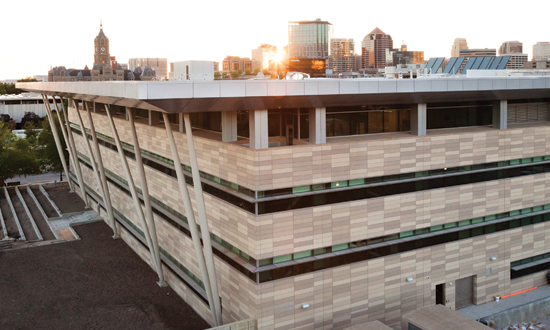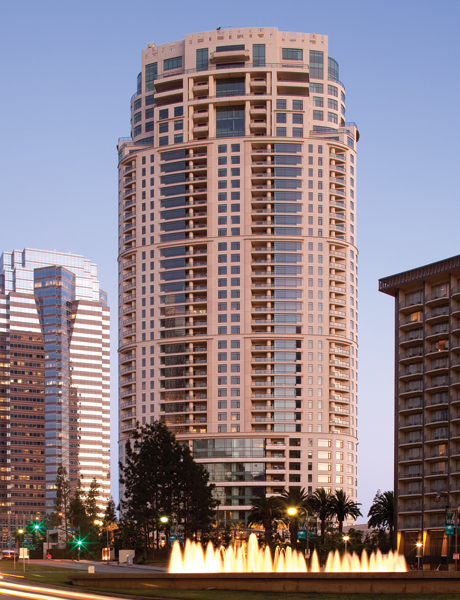Precast Concrete Life-Cycle Assessment and High-Performance Design
Study Results
The study yielded three important results that have far-reaching implications for design professionals and the industry as a whole:
Building Environmental Performance Is Dominated by the Operating Energy Stage
Operating the building over its lifetime—that is, the use phase—was shown to have the greatest overall impact on the environmental performance of a building. In fact, more than 90 percent of the impacts relating to global warming, acidification, respiratory effect, eutrophication, photochemical smog, and total primary energy occur in the use phase. While the numbers vary somewhat among the four cities studied, in all cases at least 97 percent of the total primary energy (TPE) and 96 percent of the global warming potential attributed to the building over its lifetime occur in the use phase. This is a primary reason why environmental impacts should be evaluated over the full life cycle of a building.
Environmental Performance of Precast Concrete Buildings Is Competitive
The peer-reviewed study also confirmed a basic conclusion of most balanced LCA studies of commercial buildings, namely that there is presently not a significant difference in life-cycle impacts between steel, cast-in-place concrete, and precast concrete building systems. Although concrete is sometimes perceived to have a higher environmental impact due to energy use and carbon dioxide emissions associated with manufacturing portland cement, the fact is, as shown by this research, precast concrete does not impose additional environmental burden than other materials over the full building life cycle.
The following 10 environmental impacts were evaluated for each of the 15 building cases, in each of the four cities. To provide a simplified characterization, the following discussion focuses on the coefficient of variation (COV) of the results for the 15 building cases for each environmental impact. For detailed life-cycle impact assessment results, architects can refer to the full LCA report.1












